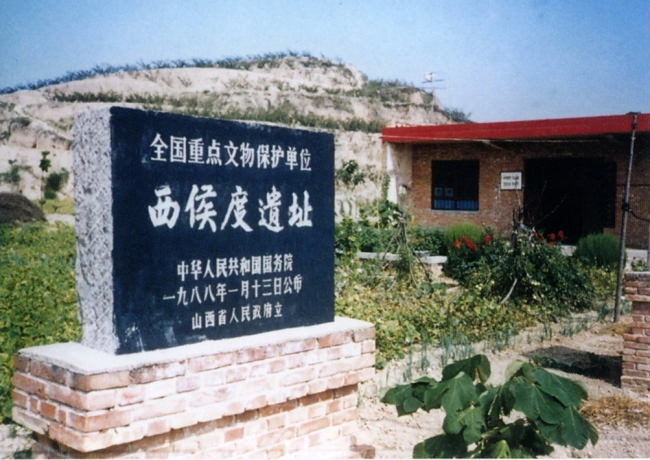The origin of China goes back to Shanxi

“Ancient Chinese Civilization and Good Sceneray in Shanxi”。In ancient times, the North China Plain was still a swamp, which was very different from the present landform. At that time, Shanxi, with a series of basins connecting the north and south, became an important channel for ancient human activities. Therefore, there are traces of human activity in Shanxi from a very early time. As one of the important birthplaces of Chinese civilization, Shanxi is rich in cultural heritage and numerous cultural relics and monuments. At present, more than 50,000 immovable cultural relics of various types have been discovered in Shanxi, and the number of key cultural relics under protection ranks first in the country, vividly demonstrating the broad and profound Chinese civilization and the long history of the Chinese culture. Below, Xiaobian will introduce historical sites and immigration bases in various cities in Shanxi Province.
1.Xihoudu Ruins
Known as “the Epitome of Egypt in Shanxi Province”, the Xihoudu ruins is located near Xihoudu Village, Fenglingdu Town, Ruicheng County, Yuncheng City, Shanxi Province. It is the earliest Paleolithic site found in China, in which people discovered burned animal bones. The discovery indicates that ancient humans in China started to use fire 1.8 million years ago.
2.Dingcun Relics Site
Located on the banks of the Fen River, the Dingcun relics site is one of the typical remains of the Middle Paleolithic culture. A large number of stone products, animal fossils, ancient human fossils, etc. have been unearthed from the site, and the remains of earthquake cracks and a stone tool manufacturing plant have also been uncovered. The unearthed three infant tooth fossils and one infant right parietal bone fossil at the site prove that people in Dingcun Village are the ancestors of the modern yellow race. Filling the gap of ancient human history from 400,000 to 12,000 years in China, the archaeological excavation of the Dingcun relics site has an irreplaceable position in human development history.
3.Taosi Ruins
Located in Xiangfen County, Linfen City, Shanxi Province, the Taosi ruins is a large settlement site in the late Neolithic age. One of the most important discoveries at this site is the Taosi Observatory, whose structure is easily reminiscent of Stonehenge on Salisbury Plain, England. The Taosi Observatory was formed in 1680 BC, nearly 500 years earlier than the Stonehenge Observatory. People can infer a complete calendar system through the observation point and rammed-earth pillars of the Taosi Observatory. This system is later the main source of the traditional Chinese 24 solar terms.
4.Jin State Ruins
In the Spring and Autumn Period of ancient China, Shanxi belonged to the state of Jin, so it’s abbreviated as “Jin” in modern times. The ruins of the State of Jin located in Houma, Shanxi Province, are the site of Xintian, the last capital of the State of Jin. A large number of ancient city sites, sacrificial sites, cemeteries, and handicraft workshop sites were discovered at the ruins. These sites fully demonstrate the social system, political system, economic development, and productivity levels of Jin State more than 2,000 years ago.
5.The Big Locust Tree
The Dahuaishu, or the Big Locust Tree, in Hongtong Dahuaishu Ancestor Memorial Garden in Shanxi Province, is considered to be the origin of many Chinese surnames. Many migrants in the Ming dynasty set out from the tree in Hongtong County to find new areas for settlement, distributing to 18 provinces(including autonomous regions and municipalities directly under the central government), 536 counties, and overseas. It is the largest, most extensive, organized, and planned migration in Chinese history. After six hundred years of migration and reproduction, wherever there are Chinese in the world, there are descendants of immigrants from the big locust tree.